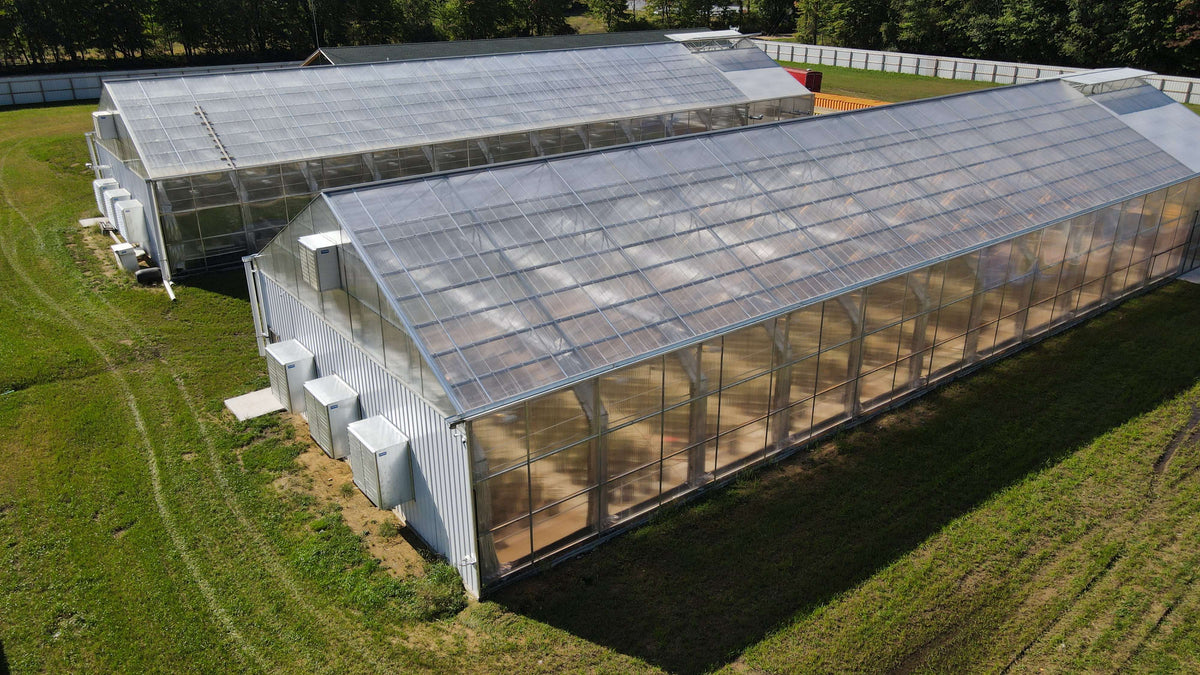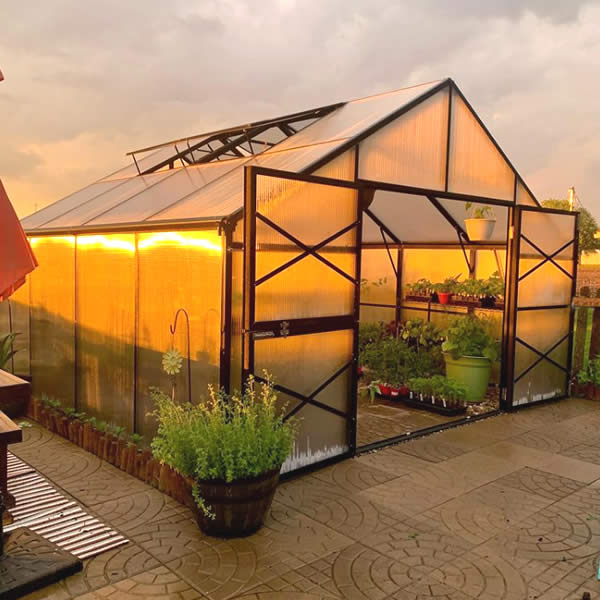Monarch Greenhouse Utah: Raising Expanding Rooms with Accuracy Construction
Wiki Article
The Future of Greenhouses: Technologies in Sustainable Agriculture
Are you curious about the future of greenhouses and how they are revolutionizing sustainable farming? Look no further! In this write-up, we will certainly discover the amazing advancements that are paving the means for a greener and a lot more efficient farming sector. From innovative environment control systems to vertical farming methods, water-efficient watering approaches, sustainable energy assimilation, and smart information analytics, these advancements are changing the method we grow our food. Prepare yourself to discover the future of sustainable agriculture in greenhouses!Advanced Environment Control Solution
To attain ideal expanding conditions, you can depend on the developments in greenhouses with advanced climate control systems. These systems have actually revolutionized the way we grow crops, providing a regulated atmosphere that contributes to plant development. With these ingenious systems, you can now adjust temperature, moisture, light levels, and also CO2 concentrations to develop the ideal problems for your plants to flourish.Among the crucial features of these sophisticated climate control systems is their capacity to control temperature. By using sensing units and automated controls, the greenhouse can change the temperature based on the specific needs of the plants. This makes certain that they are never subjected to severe warm or cold, which can be destructive to their development.
Humidity control is an additional critical element of these systems. By maintaining the excellent moisture levels, you can protect against concerns such as mold, mold, and illness from affecting your plants. These systems can likewise control the amount of light that gets to the plants, making certain that they get the optimum amount for photosynthesis.
Furthermore, progressed climate control systems can also manipulate carbon dioxide focus. By boosting the degrees of carbon dioxide in the greenhouse, you can improve plant growth and performance. This is especially advantageous in locations with reduced all-natural CO2 degrees.
Vertical Farming Methods
One crucial upright farming method is utilizing piled expanding systems. Monarch Greenhouse Utah. These systems entail organizing plants in multiple layers, vertically piled on top of each other. By using upright area, farmers can optimize their plant return without needing extra land. Stacked growing systems are typically utilized in metropolitan locations where area is limited.One preferred approach is called upright hydroponics, where plants are expanded in nutrient-rich water without dirt. This strategy is very effective as it decreases water usage by up to 90% contrasted to typical farming techniques. Furthermore, because the plants are grown indoors, they are protected from parasites and conditions, decreasing the requirement for pesticides.
Another technique is aeroponics, which involves putting on hold the plant origins in a mist or air environment. This approach permits for ideal nutrient absorption and oxygenation, leading to faster growth and higher yields. Aeroponics additionally uses much less water than typical farming and can be implemented in vertical systems, making it a prominent choice for upright farming.
Water-efficient Watering Techniques
When it comes to implementing water-efficient irrigation methods in lasting agriculture,Making best use of water preservation is necessary. With worldwide water deficiency coming to be a pushing concern, it is essential to develop ingenious techniques that enhance water use in greenhouse operations.One appealing approach is drip irrigation, which provides water straight to the plant roots, minimizing waste and evaporation. By making use of a network of tubes with small emitters, water is applied gradually and specifically, guaranteeing that plants obtain the necessary wetness without excess overflow.
An additional effective method is using dirt moisture sensors. These gadgets gauge the wetness content in the soil and supply real-time information to farmers. By monitoring the soil's wetness degrees, farmers can accurately identify when and just how much water to use, preventing over-irrigation.
Moreover, the implementation of rain harvesting systems is obtaining popularity in greenhouse farming. Accumulating rainwater from roofs and saving it in tanks allows farmers to use this natural source for irrigation purposes, decreasing dependence on conventional water resources.
Last but not least, the fostering of automated watering systems can substantially enhance water efficiency. These systems make use of sensing units to find dirt wetness degrees and climate condition, changing irrigation schedules appropriately. By maximizing water usage based upon real plant requirements, these systems can minimize water waste and promote lasting farming techniques.
Renewable Energy Combination
Eco-friendly energy assimilation in greenhouses uses several advantages, including reduced running costs and lowered reliance on non-renewable energy resources. The produced power can then be used to run various procedures within the greenhouse, such as heating, ventilation, and lights systems. These generators harness wind power and convert it right into power, which can be utilized to supplement the power needs of the greenhouse.Smart Information Analytics and Automation
To improve the performance of your greenhouse operations and enhance source utilization, take into consideration executing wise Monarch Greenhouse installation Utah information analytics and automation. Smart data analytics entails accumulating and assessing information from various sensing units and gadgets within your greenhouse. By monitoring variables such as temperature, humidity, light degrees, and soil dampness, you can acquire valuable insights right into the health and wellness and development of your plants. This data can assist you make notified choices concerning readjusting ecological conditions, optimizing irrigation timetables, and stopping possible issues before they arise.
Automation, on the other hand, involves making use of modern technology to automate jobs that were formerly done manually. This can include automating the control of illumination, ventilation, irrigation systems, and nutrient shipment. By automating these processes, you can make sure that your plants get the best problems and nutrients at the ideal time, without the demand for consistent manual treatment. This not just saves you effort and time however additionally reduces the threat of human error.
Furthermore, smart data analytics and automation can function with each other synergistically. The information accumulated by sensing units can be used to notify computerized systems, permitting them to make real-time changes based upon the existing problems. This combination of information analytics and automation can result in more reliable and exact source allotment, ultimately leading to higher returns and better plant high quality.
Conclusion
Finally, the future of greenhouses in lasting agriculture looks encouraging. With sophisticated climate control systems, upright farming methods, water-efficient irrigation techniques, and renewable resource assimilation, greenhouses are becoming much more eco friendly and reliable. In addition, using wise data analytics and automation better improves efficiency and decreases waste. These technologies are leading the means for an extra lasting and reliable farming sector, making certain a greener and much healthier future for all.
By optimizing water usage based on real plant requirements, these systems can minimize water waste and promote sustainable farming practices.

Report this wiki page